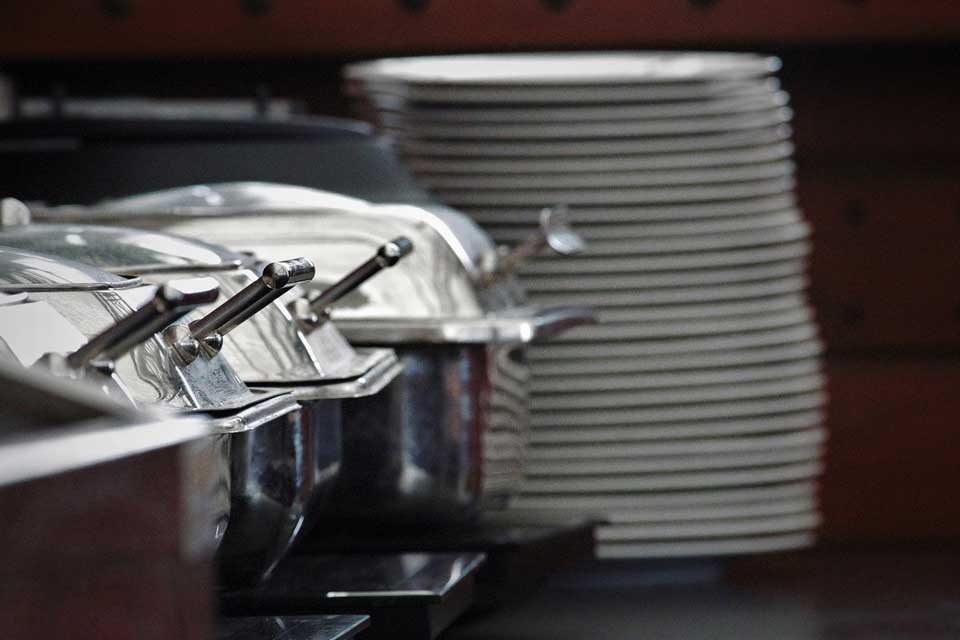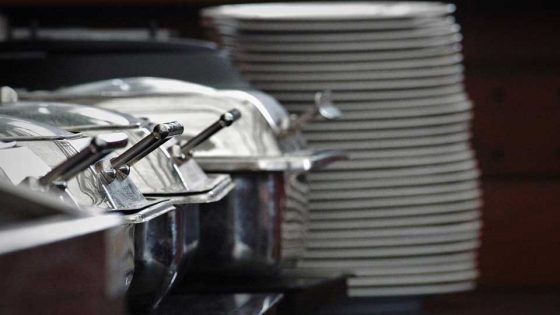For caterers within educational settings, it is clear that the current pandemic is challenging the long-established norm. The only certainty is uncertainty, as we settle into a second lockdown.
The provision of food is one of the biggest costs in a school, but the pandemic has created an opportunity to innovate and trial new ideas in the way food is delivered whilst managing costs at this difficult time. Many schools will already have a good infrastructure in place to enable them to take the steps to meet the new demands and become COVID compliant.
Hayden Hibbert, Director of Client Relations at allmanhall, independently owned food procurement expert, specialising in independent education, gives his advice on the operational changes educational settings should be considering, and how embracing new leaner, more agile working practices will help overcome the challenges faced.
Previously Head of Catering at an independent school group himself, Hayden is well-placed to make practical recommendations…
Review staff working practices and meal provision
One of the most critical planning considerations is staff numbers and their ability to cope with a change in procedures. The pandemic has forced the implementation of new ways meals are prepared and served. Self-service is being replaced with fully plated meals, which being far more labour intensive, can put strain on staff already under huge pressures. However, portion control is easier to manage with plated meals, so the upside is cost savings. Packed lunches could be an alternative and now is a good time to trial new ideas such as a click and collect solution where a student orders a meal online and collects from a designated station.
There are key questions to ask… If catering staff are absent due to sickness, are the remaining staff able to cope with the volume of meals required? Have you undergone a cost analysis of buying in prepared meals versus cooking in house and looked at batch cooking? Easy to cook dishes require less labour. And with many catered events no longer required, (for example match teas) this too will help ease the burden on staffing.
Social Distancing
With the 2-meter distancing rule in place it is necessary to review the flow in a kitchen. Ease the pressure and help with safety by staggering the time of staff arrival and departure and create shift working and a flexible rota system. If limited space, introduce one-way travel. For students, space out dining seats and split dining areas and stagger lunch times.
Hygiene
Kitchens will already be designed with good hygiene in mind. Now is a time to update cleaning schedules, concentrating on key touch points, cleaning every two hours, and cleaning seats and tables after every sitting. It could be a good idea to look at deep cleaning the whole kitchen area during holiday breaks.
What else can you do? Remove unnecessary furnishings and other items from eating and cooking areas; clean chefs uniforms more frequently; and of course, ensure adequate supplies of PPE.
Supply chain considerations
Elements of the supply chain have been under extreme pressure as a result of the pandemic. Many foodservice suppliers, still recovering from the initial lockdown, are now carrying out impact assessments, appraising their resource requirements and will need to control costs and optimise distribution. With the possibility of a disruption in supplies of some products, it is important to communicate with suppliers regularly. Give them early indications of volume changes as menus change and be flexible on delivery days. Continue to support and extend empathy to suppliers during this challenging trading time, understanding that some flexibility around delivery days and product availability may be required. If you are using a procurement partner, like allmanhall, they will be in constant dialogue with these suppliers and will offer advice and communicate any adjustments, to support you. Something else a procurement partner can help with is checking if suppliers have COVID compliant practices in place. Even if they do, you can take simple steps like considering buying in cases, to reduce touch points.
Advice and communications
Liaise with school administrators over any planned operational changes and communicate the changes to the delivery of meals to both staff and parents to manage their expectations. There is an abundant source of information online, from the Government and organisations such as the FSA. Work collaboratively with your own catering team, and encourage the sharing of ideas, and consult industry experts.
Opportunity to trial new ideas
Look at using environmentally friendly single-use packaging and ready packed cutlery. Labour saving technology in the kitchen can also reduce the pressure on staff. For example, allmanhall can give advice about stock-taking devices and other innovations available.
Create more seasonal menus, with weekly or even daily menu planning, taking advantage of lower prices for foods in season. Catering-controls platforms will help you cost menus and help to eliminate waste, as well as bringing other technological benefits.
Focus on food cost savings for schools
The catering function is one of the biggest costs for an educational establishment. Implementing a software support platform can lead to significant cost savings. An independent benchmark of the current pricing from existing suppliers, compared like for like with others by an independent procurement supplier can result in savings with very little effort, and is a good exercise in due diligence. Very quickly, it will become clear that a fully managed procurement solution as provided by allmanhall is an essential service rather than an overhead. The savings will speak for themselves.
Review the output of chefs and consider bringing back into the kitchen those that may have been moved into administration roles.
High spend categories such as meat can be reduced or substituted, and vegetarian dishes offered as an alternative. Review the need for luxury items and use own brand rather than branded goods.
There are many catering considerations to address during COVID-19, but by introducing new practices, becoming more agile with more flexible working and extending understanding and empathy to suppliers, perhaps using the expertise of a procurement provider, these challenging demands can be met.






Leave a Reply